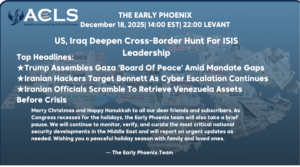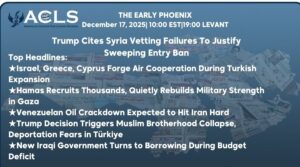IRAN
Iran’s Dual Strategy: Military Deterrence and Economic Narratives in the Face of Regional Tensions and U.S. Actions
- Iran’s Indirect Deterrence: A Veil of Fear Against U.S. Military Actions.
Despite the Iranian displayed rhetoric dismissing the significance of the American strikes calling it ‘Belated and Failed Attacks’ and confirming that no Iranian Revolutionary Guard fighters were killed, Iran is now adopting an indirect deterrence strategy that signifies concerns. Mohsen Rezaei, a veteran of the Iran-Iraq War, former IRGC commander, and member of Iran’s Expediency Council, appeared on Al Jazeera to announce an array of undisclosed indigenous products. He stated that the U.S. is leveraging the situation in Gaza to redeploy troops to West Asia, attributing this move to American vulnerabilities in Iraq and Syria. He warned that the regional dynamics have significantly shifted since the U.S. invasions of Iraq and Afghanistan.
Soon after, in a facade of self-reliance and power projection several Iranian government led media platforms reported in unprecedented detail the range of military technologies, including simulation systems for strategic planning, self-defense mechanisms like thermal balloons and jamming systems, and the AI-powered Youssef aerial periscope for target tracking. The exhibition also featured an array of missiles, such as long-range cruise missiles and the Ghadr-29, alongside drones like the Swig Build for reconnaissance and the Muharram for attacks, designed to project a facade of advanced military readiness and self-sufficiency. Furthermore, heavy military transport trucks and Cobra attack helicopter systems with “Fire and Forget” missiles were displayed, signaling an attempt to create a deterrence narrative despite underlying concerns about the actual effectiveness and technological capabilities of these assets.
Meanwhile, Iran publicly voiced its concern about American strikes possibly attempting to strike its two boats Behshad and Saviz, suspected of providing spying services and weapons transfer points after the American strikes on six Yemeni governorates this Saturday.
Previous videos showed the ship armed with a covered machine gun mounted on the deck. However, on Sunday the spokesman for the IRGC Navy describes for the first time the two ships as a “floating weapons depot,” and also describes Behshad as a ship that helps “an Iranian anti-piracy mission in the Red Sea and the Gulf of Aden.”
Highlighting the ongoing apprehension Iran has towards American military strategies in the region, Branch 55 of the Tehran Court of Justice, dealing with international cases, decided to hear a lawsuit against the United States for its attacks on Iranian frigates Sahand, Sabalan, and Joshan dating back to the 1988 Operation Praying Mantis. - Exposing the Facade: Iran’s Economic Reality Versus Official Narratives.
In a deliberate effort to obscure the glaringly apparent dire economic situation, the Iranian official narrative of economic stability takes a new turn falsifying American think tank assessment.
The Islamic Republic News Agency (IRNA) misrepresented an analysis by Patrick Clawson of the Washington Institute for Near East Policy, falsely attributing a positive spin on Iran’s economic and foreign policy situation. Clawson’s nuanced examination presents a complex view of Iran’s economy, indicating that growth primarily benefits regime insiders and highlighting significant challenges such as high inflation and economic disparities affecting the general populace. Contrastingly, IRNA’s coverage misleadingly suggests a robust economic status, a stark departure from Clawson’s critical insights.
Recent findings from the American Center for Levant Studies further debunk IRNA’s claims, highlighting Iran’s grim economic reality with a depreciating currency. The Iranian rial’s 16% fall against the US dollar has pushed inflation near 50%, drastically reducing the official government salary by 10% to an amount $400 below the $600 monthly poverty threshold. Particularly in Kurdish regions like Ilam Province, economic woes are acute, with unemployment slightly decreasing yet still reflecting widespread distress. The study notes that over 22.1% of Iranian families are living in low-income conditions. Another testament to the economic state of Iran was revealed by Iranian opposition media platform, Bayan Media Network, explaining that liquidity in Iran has reached an unprecedented figure of 8 trillion Tomans, and elevating government debt to one-third- of GDP.
Furthermore, Iran’s publicization of its four new nuclear plants contrasts with the realities of economic pressures, sanctions, and technological hurdles. This discrepancy underscores the potential gap between Tehran’s strategic communications and its on-ground capabilities, raising questions about the sustainability and practicality of its defense and energy ambitions.



